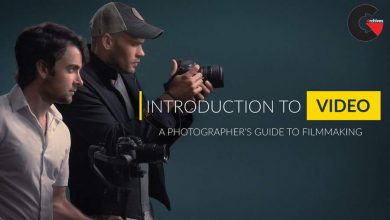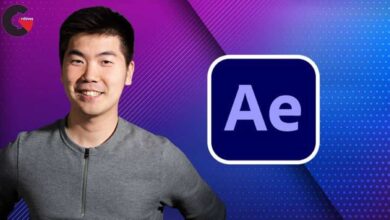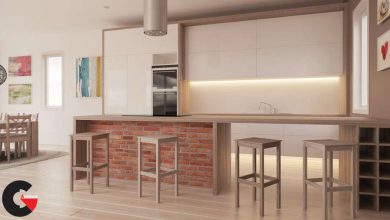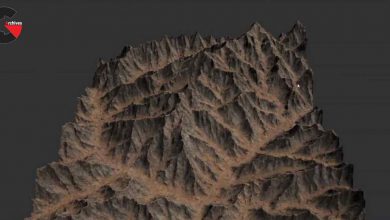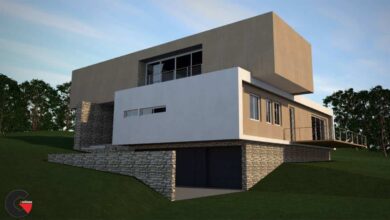Rendering an Isometric Retro Diner
 Rendering an Isometric Retro Diner
Rendering an Isometric Retro Diner
Rendering an Isometric Retro Diner : Welcome to my retro diner! In this course we focus on rendering in a high-performance (un)biased physical renderer which is Corona renderer. We will cover the basics for this render engine starting from its toolbar.
Requirements
- A desktop computer or a laptop with an Autodesk 3ds Max license (full, student or demo)
- Basic understanding of 3ds Max interface
- Downloading the Project Files
This is a practical, project-based course combining follow along lessons with visual-based explanation. You will work on this isometric retro diner scene available to download when you subscribe to my course.
The course contains 6 sections, each focused on a specific feature.
In Section 1 we’ll start by introducing Corona Renderer – which is a physical-based render engine. We will go through the Corona render toolbar and explain what each tool does. Next we will have a glimpse of our LightMix feature, set it up and see its potential! You will be able to change the lighting and atmosphere in your scene and tell different stories!
Section 2 it’s about getting inspiration. We will create two different moodboards for our diner and show you user-friendly project management tools in order to keep organised.
Section 3 is focused on Corona Materials and texturing using different workflows in 3ds max material editor.
Section 4 is dedicated to in-depth lighting. We will set-up HDR images for our environment lighting, then we learn about the basics of Corona Lights and how to use directionality, maps and ‘.ies’ files to give depth and interest to our scene.
In Section 5 we come back to the LightMix feature focusing more on setting it up and practicing. This is a practice-based section where we’ll use lighting to create different moods for our scene in order to bring forward our storytelling skills.
And finally in Section 6, we’ll tackle camera and rendering set-up. We’ll learn the exact settings to create a high res final render. Our purpose is to create a production-ready image straight from our 3d file but we’ll also save our render elements which gives us the flexibility to choose different post-processing tools. Here though, we are not using external tools such as photoshop, but only the in-built tools we have in Corona render.
At the end of this course I will give you a practical demonstration of how to apply what you learned in your own work and enhance your portfolio. And please don’t forget to write a review, your opinion is highly appreciated!
Who this course is for:
- Beginner to Mid-level 3d artists, architectural visualisers, concept artists
- Visualisers who are familiar with 3ds Max and V-ray and want to switch to Corona render
- 3d artists wanting to improve their lighting skills
- 2d artists who want to get into 3d
What you’ll learn
- Introduction to Corona Render – a Physical-based render engine
- Environment lighting with HDRIs and setting-up the LightMix Feature
- Materials and Texturing basics in Autodesk 3ds Max and Corona Render
- Style, Planning and Inspiration + Project Management Tools
- In-depth lighting techniques in Autodesk 3ds Max and Corona renderer
- Storytelling through Lighting in Corona LightMix feature
- Orthographic Camera Settings
- Render High resolution Images
- Post-processing in Corona Frame Buffer
- Additional Tips: Storytelling in your Portfolio
lB6MwSwNNIYYHz66UqInBRH/video%205/44779
Direct download links 1.9 GB :
Direct download link reserved for subscribers only This VIP
Dear user to download files, please subscribe to the VIP member
- To activate your special membership site, just go to this link and register and activate your own membership . >>>register and activate<<<
- You can subscribe to this link and take advantage of the many benefits of membership.
- Direct downloads links
- No ads No waiting
- Download without any limitation ، all content in website
CGArchives Is The Best
Review
Review
Review this tutorial
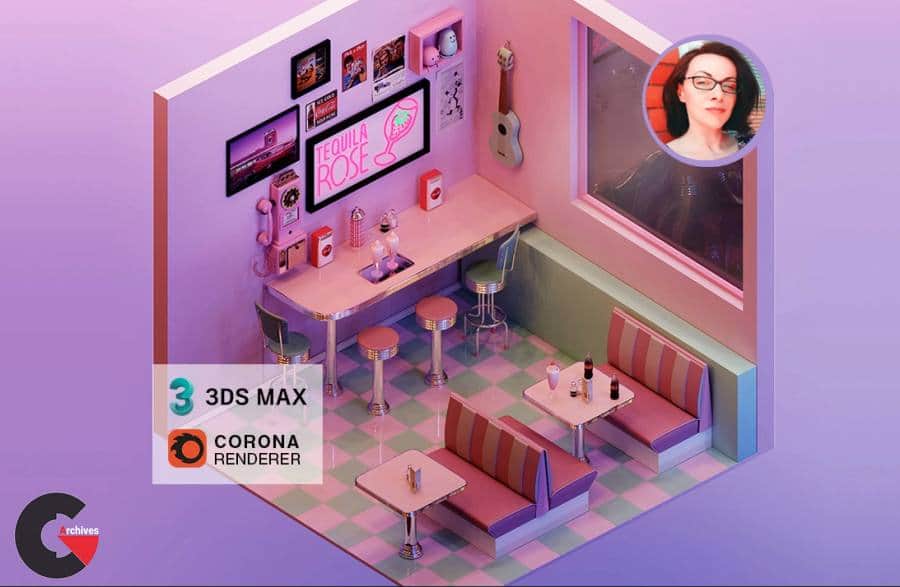 Rendering an Isometric Retro Diner
Rendering an Isometric Retro Diner
